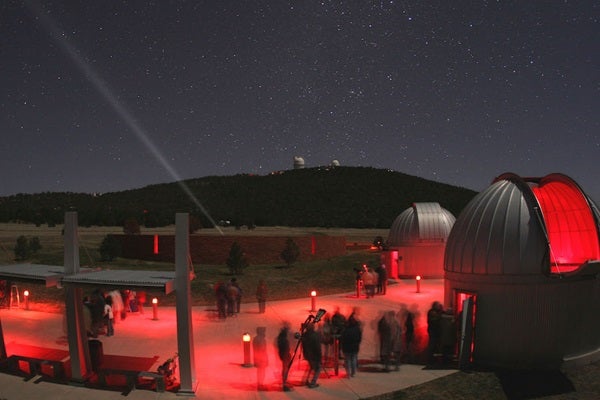“We are extremely pleased to join forces with the McDonald Observatory to bring this training to NPS park and regional office staff,” said Ray Sauvajot, NPS Associate Director for Natural Resource Stewardship and Science. “The observatory’s experience with hands on training combined with the expertise of our Natural Sounds and Night Skies Division will provide new opportunities for career development, capacity building for the field, and leveraging our efforts toward enhancing visitor experience and the preservation of our national park night skies.”
Marc Wetzel, the observatory’s Senior Outreach Program Coordinator, will give two workshops for national park rangers. One workshop will occur in the spring at McDonald Observatory, and another on-site at a national park. The project will develop fun activities for daytime and nighttime visitors to the national parks and create a curriculum for the park service, he said.
“This is a really fantastic partnership,” Wetzel said. “The National Park Service shares similar goals for interpreting the night skies for visitors as we do.” He explained that “dark skies are one of the parks’ natural resources, in addition to water, mountains, and wildlife.
“This project is similar to what we’ve done successfully in the Texas state park system,” he added. It was McDonald Observatory’s work with the Texas Parks and Wildlife Department that drew the National Park Service to propose collaboration with McDonald.
Located near Fort Davis, Texas, the observatory hosts multiple telescopes undertaking a wide range of astronomical research under the darkest night skies of any professional observatory in the continental United States. It is home to the consortium-run Hobby-Eberly Telescope (HET), one of the world’s largest, which has recently completed a $40-million upgrade. An internationally known leader in astronomy education and outreach, McDonald Observatory is also pioneering the next generation of astronomical research as a founding partner of the Giant Magellan Telescope.
This press release originally appeared on McDonaldobservatory.org.











